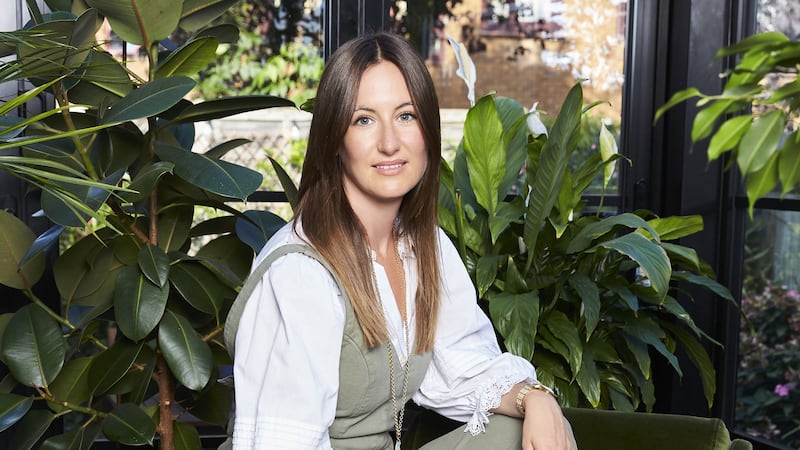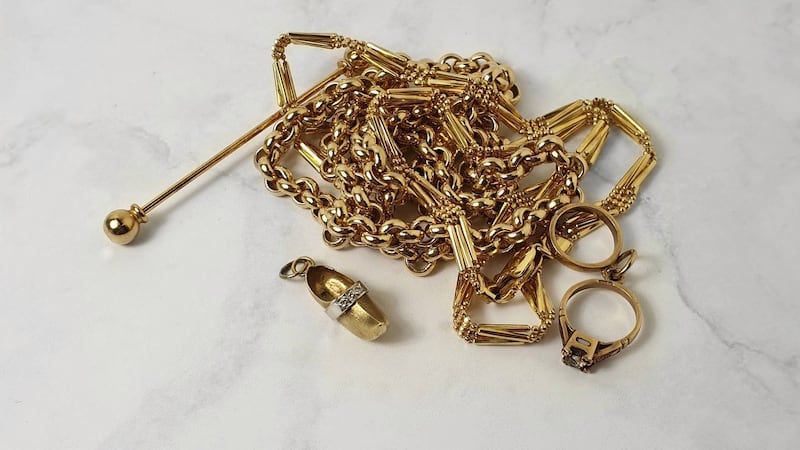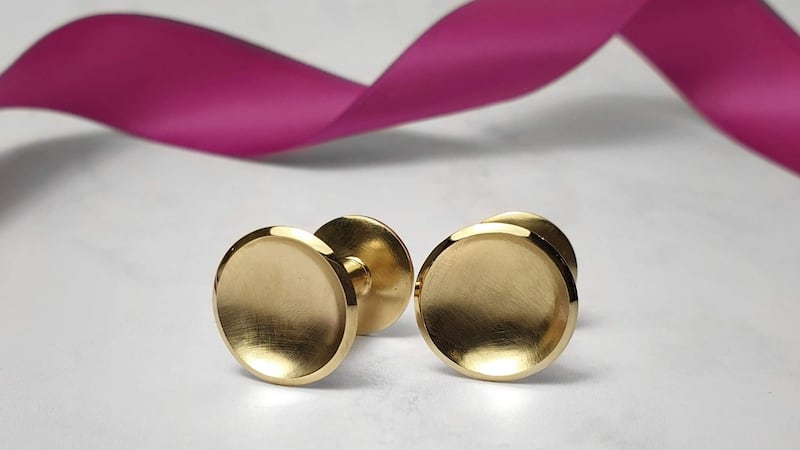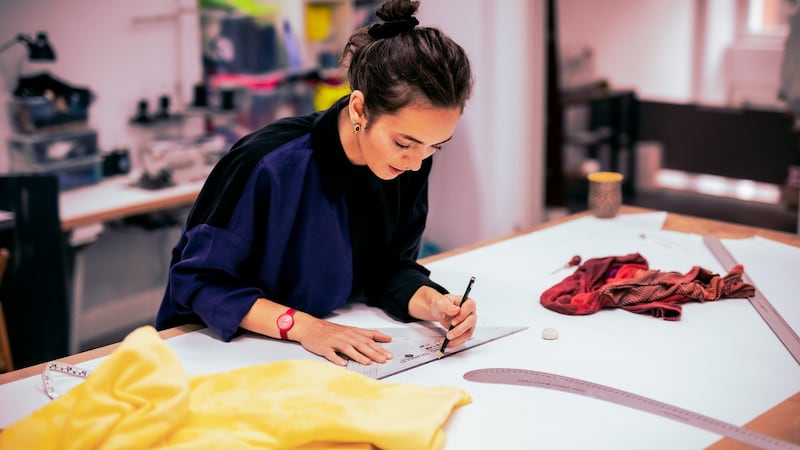“Make do and mend” was a philosophy practised under rationing restrictions during the second World War. The phrase originated in a pamphlet issued by the British Ministry of Information, with thrifty advice on how to be frugal yet stylish by re-using or re-inventing old clothing.
Eighty years on these ideals are being revived, as consumers re-evaluate their fashion habits in light of the climate crisis, a backlash against the wear and throw away culture inspired by fast fashion and, more recently, the spiralling cost of living.
Brown Thomas’s recent partnership with The Restory, a luxury aftercare service, illustrates how the art of caring for your possessions is being revived. The Restory’s team of artisans employ a wide range of techniques to bring treasured items back to their former glory: they can clean, repair, alter and restore designer shoes, bags and clothing so they appear as good as new, and can continue to be used and loved.

The fashion industry produces 20 per cent of global wastewater and 10 per cent of global carbon emissions, and textile dyeing is the second largest polluter of water globally. It relies almost exclusively on non-renewable resources – 98 million tonnes in total per year – while 73 per cent of used clothing ends up in landfill or incineration. To make wardrobes sustainable, we need to cut our fashion consumption by 75 per cent.
The circular economy helps us make loved clothes last longer while decreasing resource consumption, energy use and environmental damage. It is a small but vital step in trying to live a more sustainable life and save our planet.
Giving longevity to your wardrobe by cherishing and maintaining what you already own is a skill-set we need to re-learn. Here’s how to keep the pieces you love wearable for longer.
1. Audit your wardrobe for items that need to be repaired or retired
If you no longer wear a piece because it needs a repair, get it done. If you don't wear a piece, re-sell it and release the value to finance other repairs or alterations. Roisin Boyce Cantwell of Kenchiku Alterations in Dublin 8 has more than 30 years of experience bringing new life to old clothes. She advises: "Spring is a great time to go through your wardrobe. Look critically at everything. Some pieces might best be donated but many can be brought back to life with a few simple tricks, such as resizing the shoulders, re-fitting the waistline or even just shortening the sleeves or legs to hide wear on the hem. Talk to your alterations service about what is possible. It is surprising what can be done to a garment with a bit of ingenuity, everything from adding panels in a complementary colour to building a new garment from the design of an older much-loved but worn-out piece."

2. Check fabric composition and care labels before you buy
A cheap top that is dry clean only and must be cleaned after every wear is bad value, but a tailored coat which might need to be cleaned only once a season is not going to cost you a lot. Carrie Ann Moran, founder of Circular Fashion Ireland, explains: "How we care for our clothes carries a substantial carbon footprint across the garment's full lifecycle, so being considerate at this stage can not only elongate the lifespan of your clothes but help reduce your clothing carbon footprint."

Her tips? “Opt for air drying to avoid unnecessary use of electricity. Lower the washing machine temperate [30 degrees or less] – this will not only reduce the micro fibre shedding from our synthetic clothing, but it is kinder to the textile and will help the garment live for longer. It will also help reduce energy use by up to 40 per cent. Opt for kinder eco detergents. Not only are they great for the environment but fantastic for our clothing, as nasty substances have been removed. Read the care labels and get to know what those symbols stand for, as this will help you avoid unnecessary shrinkage and scorching from an iron for example, and also help you to avoid purchasing dry clean only garments.”
3. Keep pieces clean, fresh and dry
Protection can prolong the lifespan of footwear and accessories. Using rubber brushes and spray protector on suede shoes and bags prevents stains and scuffs. Conditioning leather items with a leather cream such as carnauba cream keeps them supple and soft and extends their lifespan. Something as simple as putting a tea bag in your shoes to kill offensive odours works wonders. Using a toothbrush and detergent to clean the soles of trainers and washing trainer laces to give them an instant re-fresh is a very simple yet effective hack.
"Regular maintenance and good storage are key," says Emily Rea of The Restory. "Items can get just as damaged when they are not in use as when they are being worn. Stuff bags with old pillows or old textiles like socks for small cavities, store everything in boxes or dust-bags away from light [which can even distort white], heat and damp. If you have been caught out in the rain, dry your shoes away from artificial heat (like a radiator) with newspaper stuffed inside to maintain shape. Steaming clothes keeps them refreshed between washes. Above everything, the best piece of advice is to be proactive with pre-wear measures and repair items as and when damage or wear occurs. It's the most efficient and cost-effective way to prolong the lifespan of your items."
4. Reviving needn’t be confined to clothing
An old piece of jewellery can be re-imagined too. Stonechat jewellers in the Westbury Mall in Dublin 2 began offering a re-modelling service due to customer demand and now it is a thriving part of their business.
"Remodelling is primarily done for sentimental reasons," says owner Ann Chapman. "Jewellery can hold many stories and emotions, so using this sentimental jewellery to create a new piece that can be worn and enjoyed for years to come is wonderful but the fact that it is the most sustainable way to create a new piece of jewellery is also a fantastic benefit.


“Removing mining and refining from the process of making a piece of jewellery means it has little to no ecological impact, and supporting the local economy at the same time is an added bonus.”
5. Track what you buy
Keeping a list of all purchases works to track spending and the numbers will make you think twice about buying non-essential pieces. Try carrying a list of items you need to replace – it will focus your mind and prevent arbitrary purchases. Lucy Bowen, lecturer and circular textiles training facilitator with the National College of Art and Design (NCAD), says "our current linear take-make-waste model is rapidly approaching a dead-end".

“Before buying something new, ask yourself, will I wear that 30 times? If not, can I rent, borrow or buy vintage instead?” she advises.
“Unsubscribe from fast-fashion mailing lists and social media and don’t just hit the shops for a ‘browse’. Instead, when you really want something, do your research at home and purchase with a greater purpose. Host a seasonal swap-party with a few friends of similar style and size, to keep the clothes you collectively already own being loved and lived in.
“Don’t succumb to social pressure for constant ‘newness’. Have confidence in consistency and see what you can do with creative styling and accessories before committing to a whole new outfit. If in doubt, remember the 5 Rs: reduce, re-wear, recycle, repair, re-sell. Invest in brands that offer repair services and lifetime warranties, and build your own long-term personal style over trends and whimsical purchases.
“Always buy sustainably produced, natural fibres. Not only are they better for you, the makers and the planet, but they’ll last much longer and can also be re-dyed and up-styled much more easily when you’re ready for a change.”
6. Making something with your own hands gives you greater respect for it
Over time as most high street clothing has come to be made in low wage economies, we have lost our relationship with the manufacturing process. Learning to sew or knit is a good antidote.
Many schools within the NACED Adult Education network offer evening classes in sewing, dressmaking and fashion design for beginners and improvers. During a typical dressmaking course, every aspect of making a garment is covered, while some courses also cover repairs and alterations to existing garments.
“Learning basic repair skills is not just cost-saving but enormously fulfilling and meditative,” says knitwear designer Lucy Bowen.
“It’ll nurture your connection to your clothes and build your understanding of the work that went into them in the first place, as well as enriching your personal style.”
Meagan Hutchinson of yarn shop Vivi Trading in Kinsale in Co Cork has noticed more and more "beginners coming in and taking up knitting and crocheting".
“I always tell beginner knitters to remember that all knitting is just ‘knit and purl’, so once you get the hang of the basics you really can do anything. I always encourage them to start with a small simple project to work on their tension and to understand the process of knitting – how to recognise different stitches, count rows, understand the relationship between the wool and needle size and knit in a straight line.
“It is also vital to use a really good quality wool that feels good in your hands and looks good when knitted. A scarf or a simple cushion cover are easy first projects.”
Useful resources
[ the-restory.comOpens in new window ]
[ kenchiku.ieOpens in new window ]
[ adulteducationireland.ie/sewing.htmlOpens in new window ]
[ vivitradingco.comOpens in new window ]
[ fashionrevolution.org/europe/ireland/Opens in new window ]










